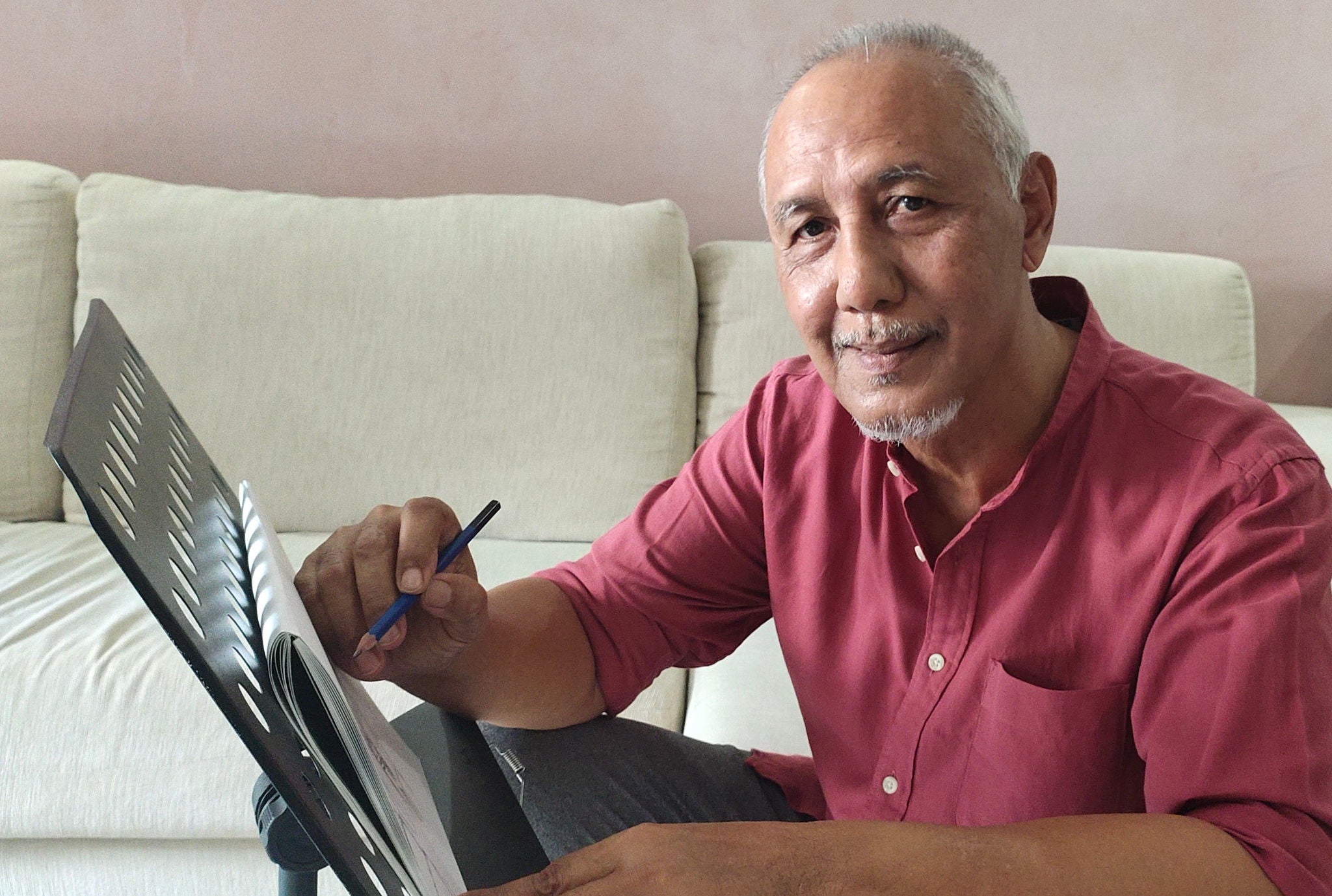
Emergency treatment at the first sign of stroke improves recovery and reduces the risk of long-term disability.
Watching Mr Zailani Bin Mahmood draw, it is hard to believe he suffered a stroke four months ago. Had it not been for his daughter Salinah’s quick actions, the 66-year-old might have lost his drawing skills for good.
“I had just finished eating dinner at home when I started feeling unwell. I felt light-headed and could not control my arms,” remembers Mr Zailani.
Fortunately, his family was with him and reacted quickly. “My sister Nuraisah caught him from behind as he started to fall, and we were able to sit him down on a chair,” says Salinah. “When I saw that he could not move his arm properly, that his speech was slurred, and that his face was drooping on one side, I knew he was having a stroke.”
Salinah immediately called 995 for an emergency ambulance. When Mr Zailani arrived at Changi General Hospital, he was given medication to dissolve the clot in his brain to help restore blood flow.
He was then transferred to Singapore General Hospital for a procedure to remove the clot. But when he arrived, another scan showed that the clot had already dissolved, so the procedure was not needed.
Mr Zailani’s speech and the right side of his body, including vision in his right eye, were affected by the stroke. “All I could see was black out of my right eye. However, vision gradually started to return the next morning and, within one week, it was nearly back to normal,” he describes. Just two days after the onset of his stroke, Mr Zailani was able to walk again; he was discharged two days after that encouraging sign.
At home, Mr Zailani’s family helped him recover — chatting with him to improve his speech, exercising together with him, and reminding him to take his medication to prevent another stroke from occurring. To strengthen his right arm and keep his mind active, Nuraisah gave him a sketch book and pencils. “I stopped drawing when I left school, and it has been fun to take it up again. I can spend hours drawing landscapes and family members — I get so absorbed that I don’t realise how much time has passed!” says Mr Zailani.

Mr Zailani's realistic drawing of horses, which he drew a couple of months after his stroke.
WHY CALL 995 FOR STROKE?
"Mr Zailani’s recovery is an example of the benefits of acting quickly for stroke patients. When an emergency ambulance is dispatched for a case involving stroke, the paramedics will contact the hospital en route. The on-duty stroke team is then activated and will be on standby to receive the patient at the Emergency Department.
This ensures prompt assessment and treatment, which can reduce the risk of long-term disability.
On arrival, the patient is assessed and sent for a brain scan. The team, together with a dedicated stroke specialist, will then decide on the most suitable course of treatment. The treatment offered will be based on a few considerations, such as the onset and type of stroke, medical history, regular medications (where applicable), and the safety of the treatment for the case at hand.
Many patients do not arrive in time to be considered for hyperacute stroke treatments. Hopefully, when more people recognise the signs of stroke and remember to call 995, we can achieve more success stories like Mr Zailani’s case.
Remember: Time is brain. To spot a stroke, think F.A.S.T."
- Dr Charles Chan Chung, Associate Consultant, Department of Neurology, NNI

Image reproduced with permission from Stroke Services Improvement team
This article first appeared in NeusLink Issue 14 - click to download!
Check out other related articles:
Stroke: When It Strikes During Sleep













 Get it on Google Play
Get it on Google Play